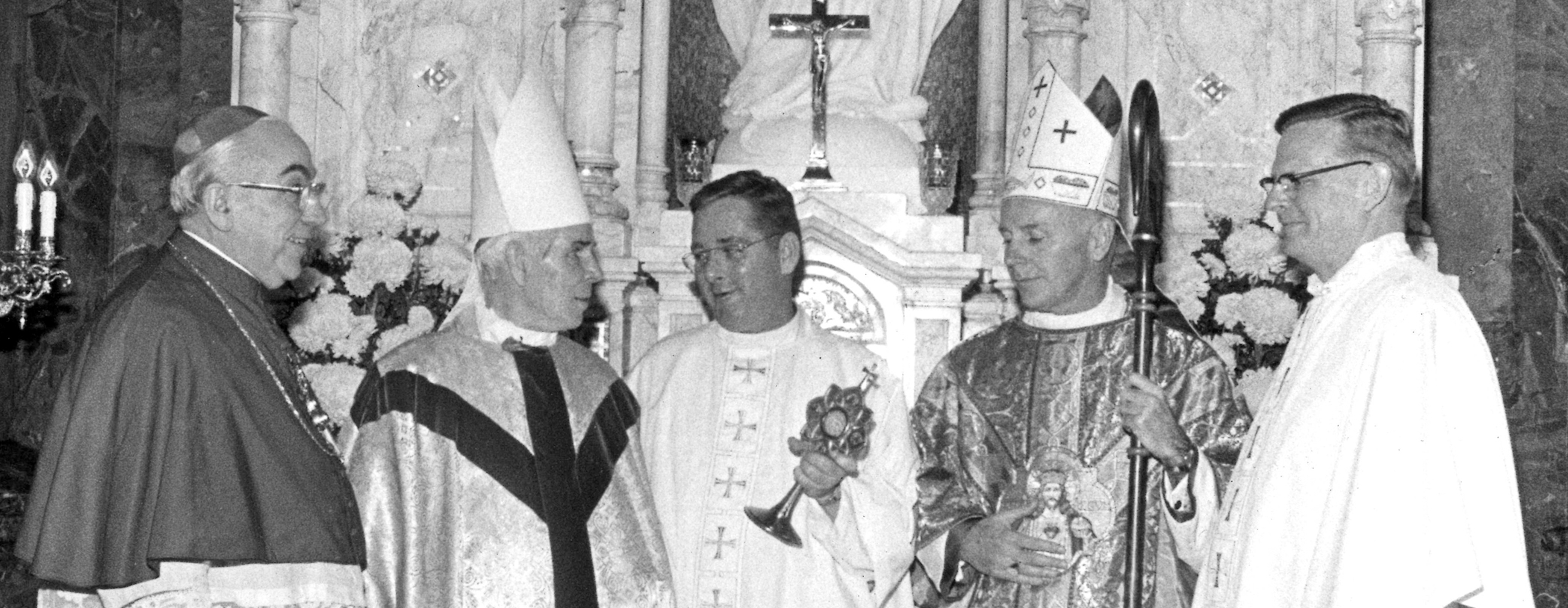Saintly Visitors
Saintly Visitors
The Miraculous Medal Shrine is a home for all the faithful, who are each “called to be saints” in his or her own lifetime. However, over the decades, the Shrine has also been home to some individuals who, after their deaths and a long process of investigation, have been give formal, ecclesial recognition as saints—or are on the official “path” to sainthood.
Philadelphia-native St. Katherine Drexel (1858-1955) was born a wealthy heiress, yet she gave herself and her inheritance to God by founding the Sisters of the Blessed Sacrament, which provided services to Native Americans and African Americans. St. Katherine also founded St. Catherine of Sienna Parish in Germantown and asked the Vincentians to serve there as pastors and parochial vicars. (The parish has since merged with St. Vincent de Paul Parish.)
By the time of her death, St. Katherine’s ministries had more than 500 sisters teaching in 63 schools throughout the country and 50 missions for Native Americans in 16 different states. She was canonized on October 1, 2000, by Pope John Paul II.
By all accounts, St. Katherine Drexel and students from her school were regular attendees of the Monday Perpetual Novena at the Shrine. She would sit in the third-pew nearest the main shrine to Our Lady.
Venerable Archbishop Fulton J. Sheen (1895-1979) was an American archbishop known for preaching on his Emmy Award® winning television show, Life is Worth Living, which reached an audience of millions. Venerated in 2012 by Pope Benedict XVI, Pope Francis recently approved a miracle attributed to Archbishop Sheen, making possible the American television catechist’s beatification at a yet-unannounced date.
Archbishop Sheen was a friend to the Vincentians of the Eastern Province, even having a Vincentian priest, Fr. Vincent Nugent, CM, as his secretary. While it is uncertain just how many times Archbishop Sheen visited the Shrine, we do know that he delivered the homily at the Shrine for the 1976 Feast Day Mass of the Solemn Novena.
Likewise, the Venerable Fr. Michael J. McGivney (1852–1890) founder of the Knights of Columbus, a Catholic, fraternal men’s organization, has been reported to have visited the Chapel of the Immaculate Conception at St. Vincent’s Seminary before it became the Shrine. Even more interesting, it is reported that Fr. McGivney formed the idea of the Knights of Columbus during two years of his seminary training at the College and Seminary of Our Lady of Angels, which became Niagara University, a Vincentian Institution. Like Archbishop Sheen, Fr. McGivney also had a Germantown-based Vincentian as his secretary.
Two well-known Germantown-based Vincentians, Fr. Thomas Judge, CM, and Fr. William Slattery, CM, whose causes for sainthood are being considered, have a natural connection to the Shrine. Fr. Judge (1868-1933) was an early promoter of layperson leadership in the Church, and Fr. Slattery (1895-1982) was the first American to serve as Superior General for the Congregation of the Mission and the Daughters of Charity.
Process to Being Declared a “Saint”
Step One: Wait Five Years (Usually)
The process to make someone a saint cannot normally start until at least five years after their death. A papal waiver can be granted in certain cases to begin the process earlier.
Step Two: Become a ‘Servant of God’
The bishop of the diocese where the person died can open an investigation into the life of the individual, to see whether they lived their lives with sufficient holiness and virtue to be considered for sainthood. Once the case is accepted for consideration by the Vatican’s Congregation for the Causes of the Saints, the individual can be called a “Servant of God.”
Step Three: Proof of ‘Heroic Virtue’
The Congregation for the Causes of Saints scrutinizes the evidence of the candidate’s holiness, work, and signs that people have been drawn to prayer through their example. If the Congregation approves the case, it is passed to the Pope. If the Pope decides that the person lived a life of “heroic virtue,” they can then be called “Venerable.”
Step Four: Verified Miracle
To reach the next stage—beatification—a miracle needs to be attributed to prayers made to the individual after their death, seen as proof that the individual is already in heaven and able to intercede with God on others’ behalf. Incidents need to be verified by evidence before they are accepted as miracles.
After beatification, the candidate is given the title “Blessed.” There is one exception to the miracle requirement—a martyr, someone who died for their faith, can be beatified without a verified miracle.
Step Five: Canonization
Canonization is the final step in declaring a deceased person a “Saint.” To reach this stage, a second miracle normally needs to be attributed to prayers made to the candidate after they have been beatified. Martyrs, however, only need one verified miracle to become a saint.
Adapted from: https://www.bbc.com/news/world-europe-27140646


